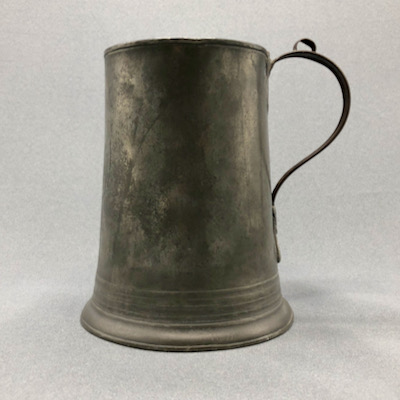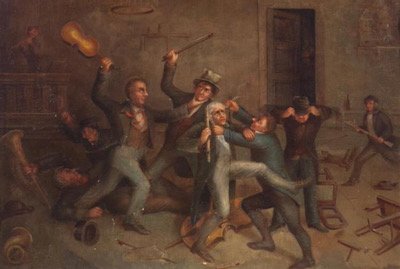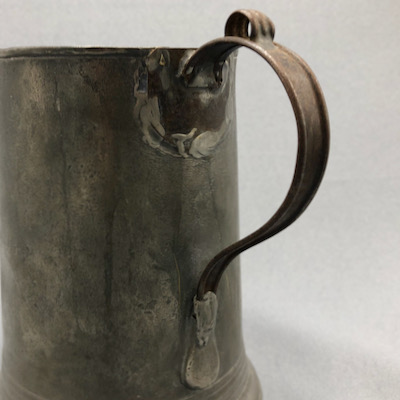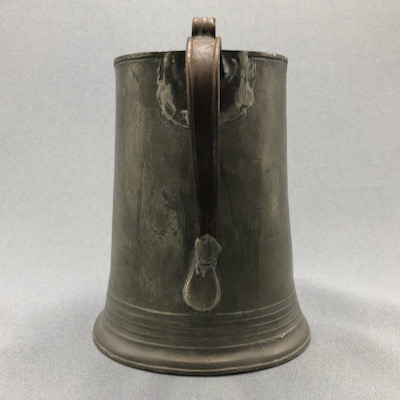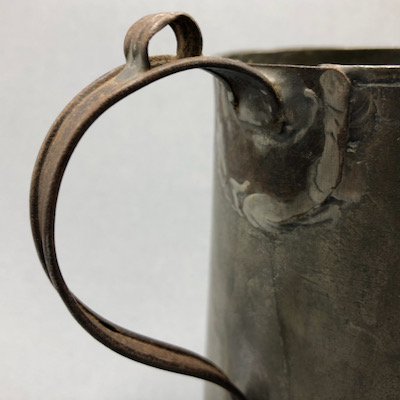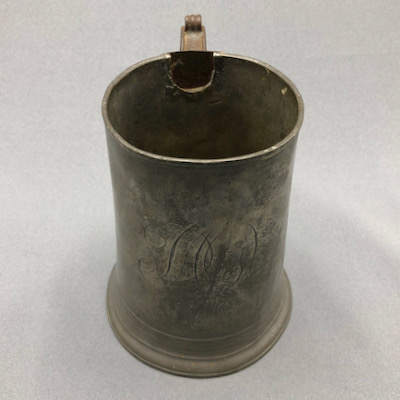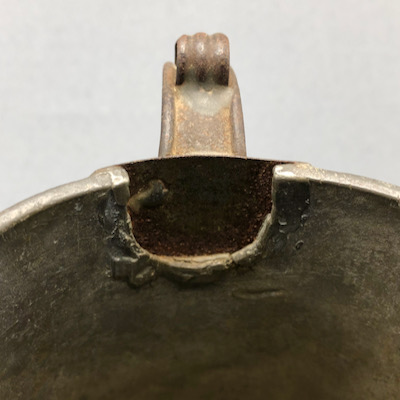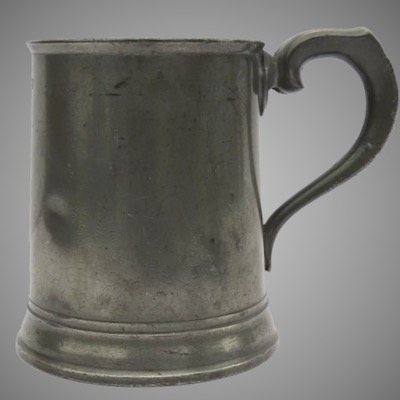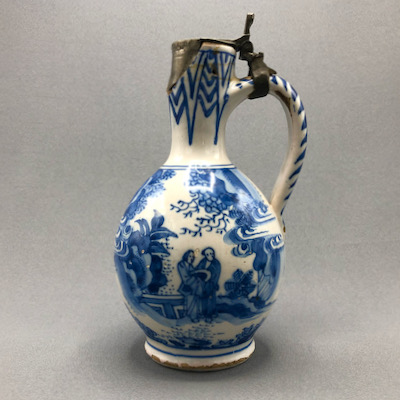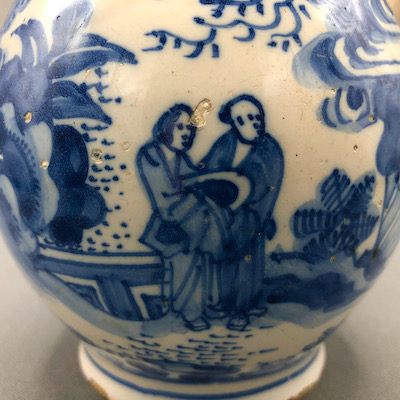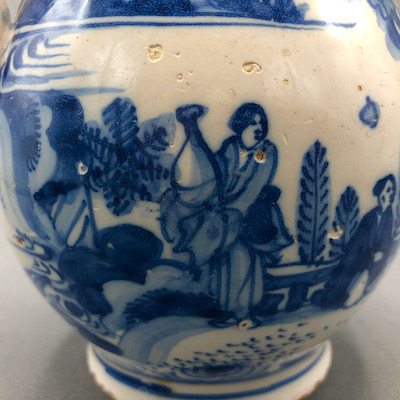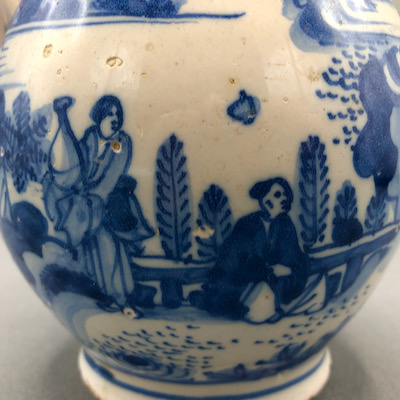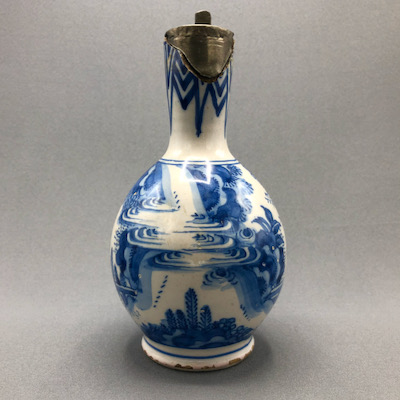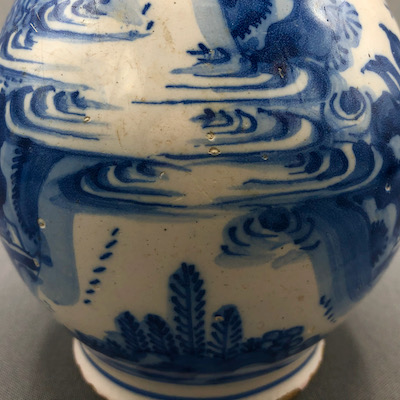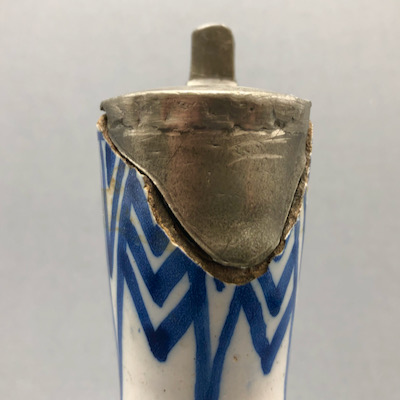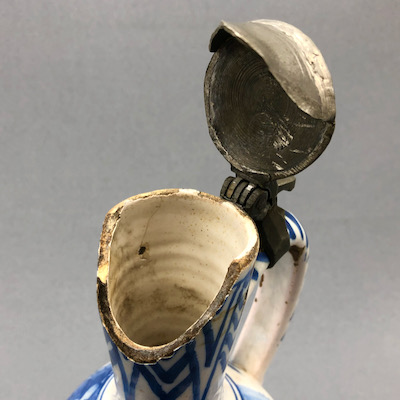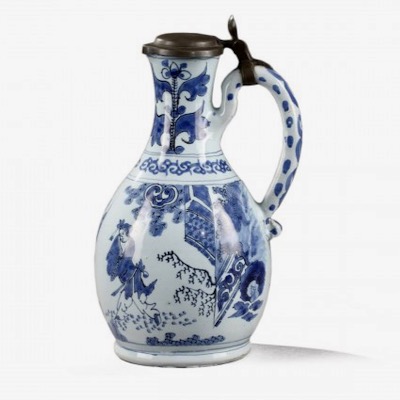This EAPG (Early American Pressed Glass) water goblet in the Bullseye & Rosette – aka Star – pattern was most likely made in Pittsburgh, PA by Bakewell, Pears & Company. It dates from 1865 and stands 6.75 inches high.
At one point in its early life, the original glass base snapped off and was replaced by a turned wood replacement. The new base appears to be an at home repair, repurposed from a section of a stair newel post, as seen in the last photo. A lovely example of making-do, don’t you think?
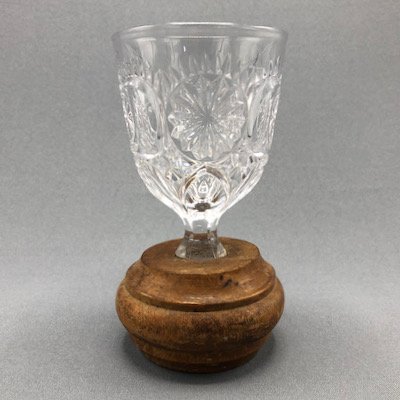
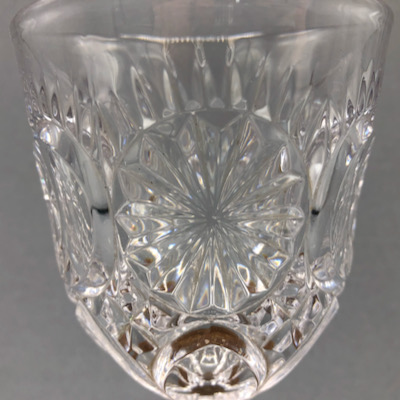
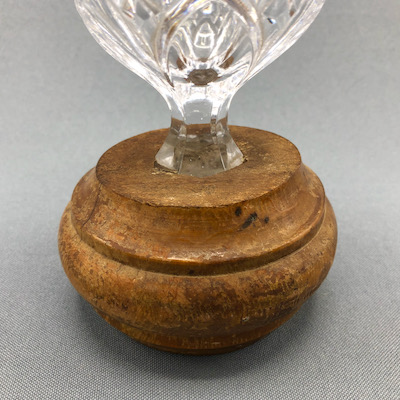
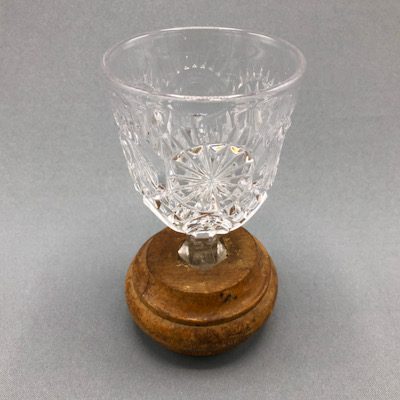


This goblet with a similar pattern suggests what the original base on mine would have looked like.
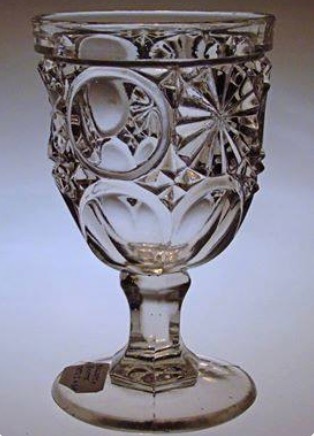
Photo courtesy of Early American Pattern Glass Society

Photo courtesy of eBay
